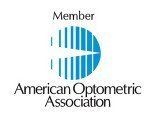Eye Exams for Children (Age 1 - 17 Years)
During a child's first 12 years, 80% of learning happens through their eyes. Yet 1 in 4 children have a vision problem and don't even realize it. Many children are at a severe disadvantage in school because they can't see well. Vision problems are often misdiagnosed as an unrelated problem like ADHD when in reality, all they need is a pair of glasses. Having your child's eyes checked with an annual comprehensive eye exam is important. Visit Family Eye Care of Woodstock and Lake Geneva
today!
There is something parents, educators, and professionals can do to help children obtain the visual skills they need before they fall way behind in school. Parents can ensure that their children get regular vision exams beginning at 12 months old. Schools are helpful by conducting vision screenings, but parents should not rely entirely on screenings.
In Illinois, all children enrolling in Kindergarten or for the first time in public, private, or parochial schools are required to have an eye examination. Screenings are recommended for students of grade 4, 6, 10, and 12 and shall be provided in all public, independent, private, and parochial schools. Parents and teachers can also observe and learn to recognize signs and symptoms of learning-related visual problems.
Knowing when a child is having vision symptoms and when to refer them to an eye doctor who specializes in visual function can significantly reduce the number of children experiencing learning difficulties.
Signs and Symptoms of Eye and Vision Problems
Signs that may indicate a child has a vision problem include:
- Frequent eye rubbing or blinking
- Short attention span
- Avoiding reading or other close activities
- Covering one eye
- Squinting
- Tilting the head to one side
- Holding reading materials close to the face
- An eye turning in or out
- Seeing double
- Losing place when reading
- Difficulty remembering what he or she read
The earlier vision problems are detected and remediated, the less time will pass where individuals fall behind if left untreated. Vision problems CAN be corrected. It does not have to be part of the learning problem.
Sources: American Optometric Association and Vision and Learning



